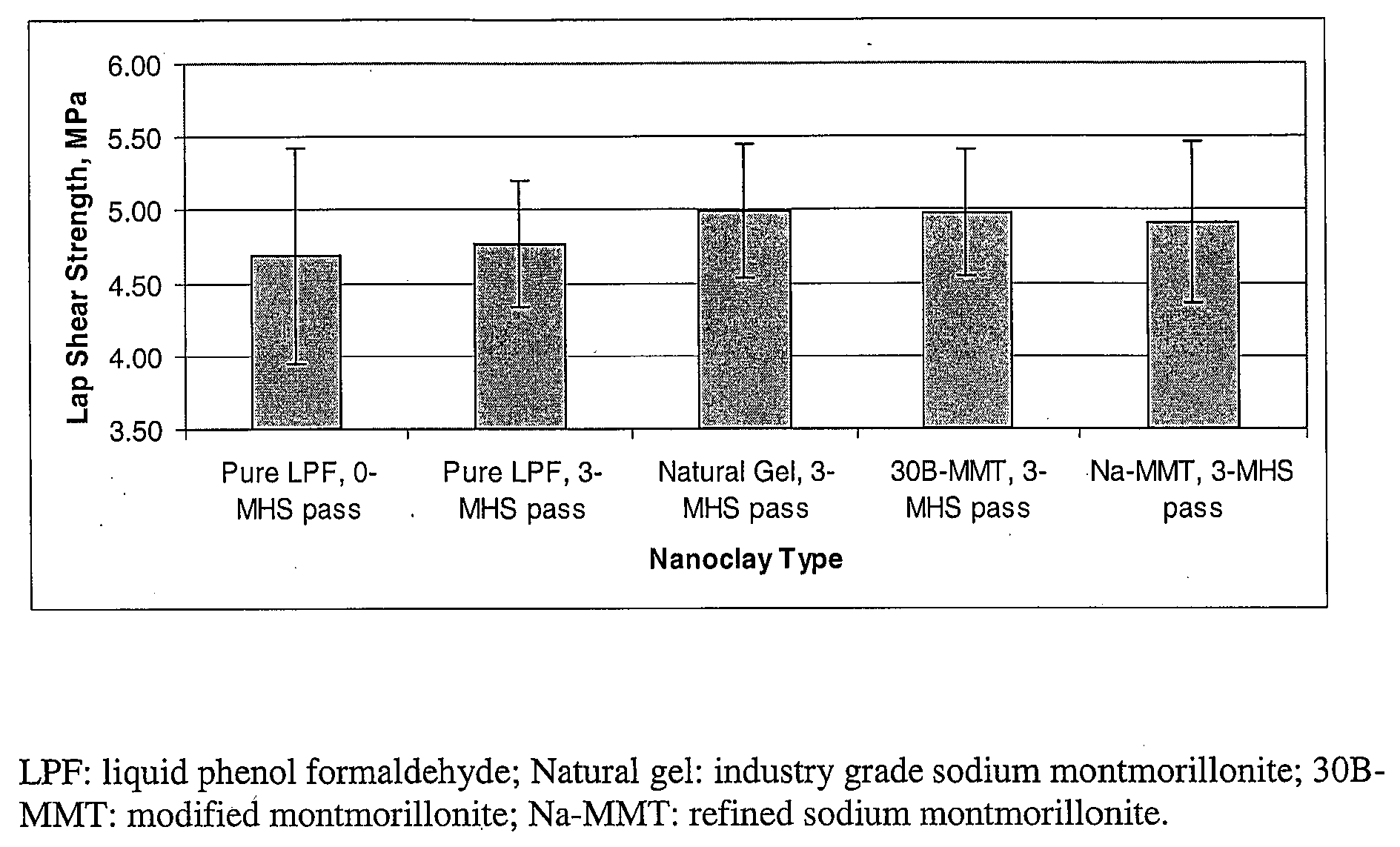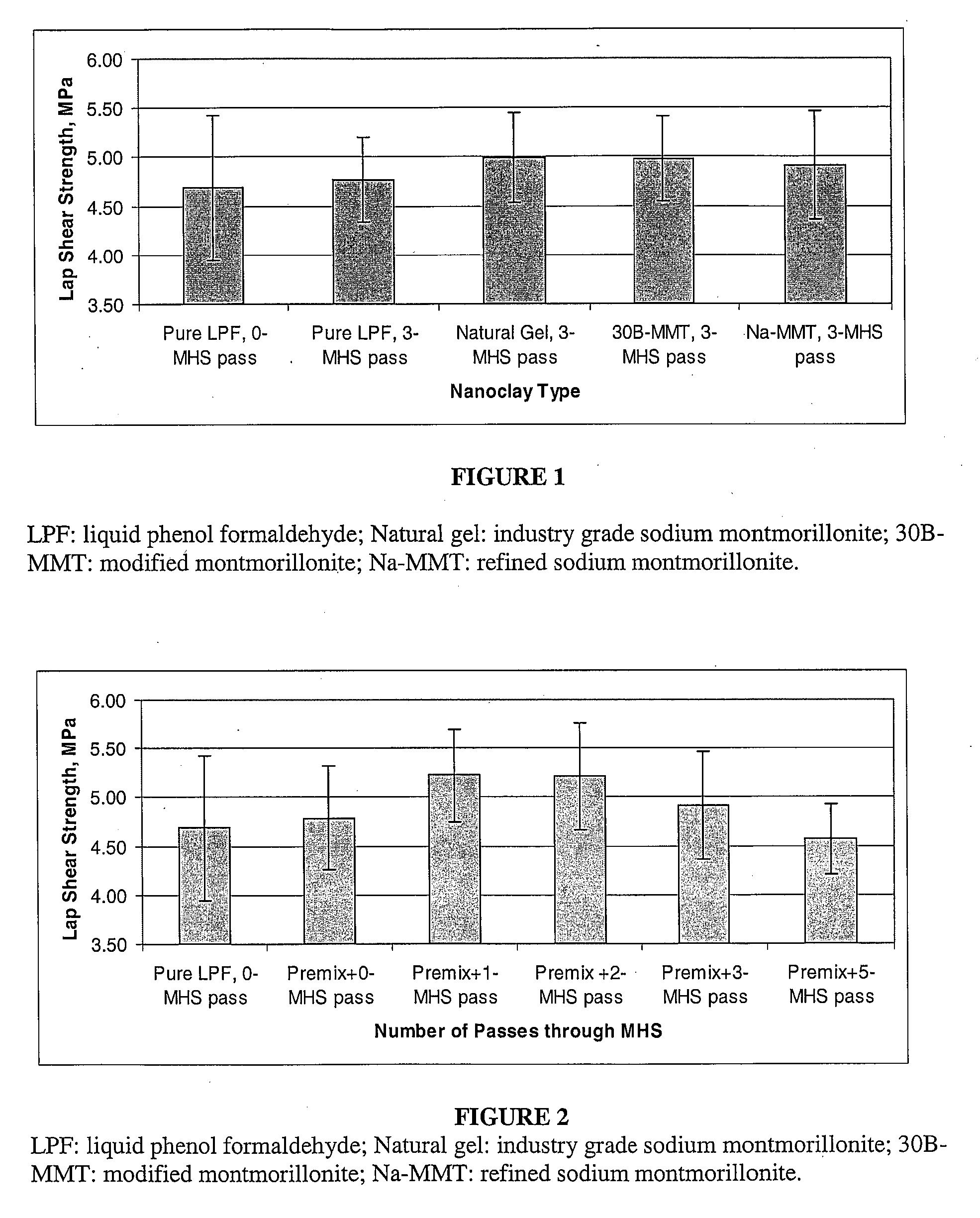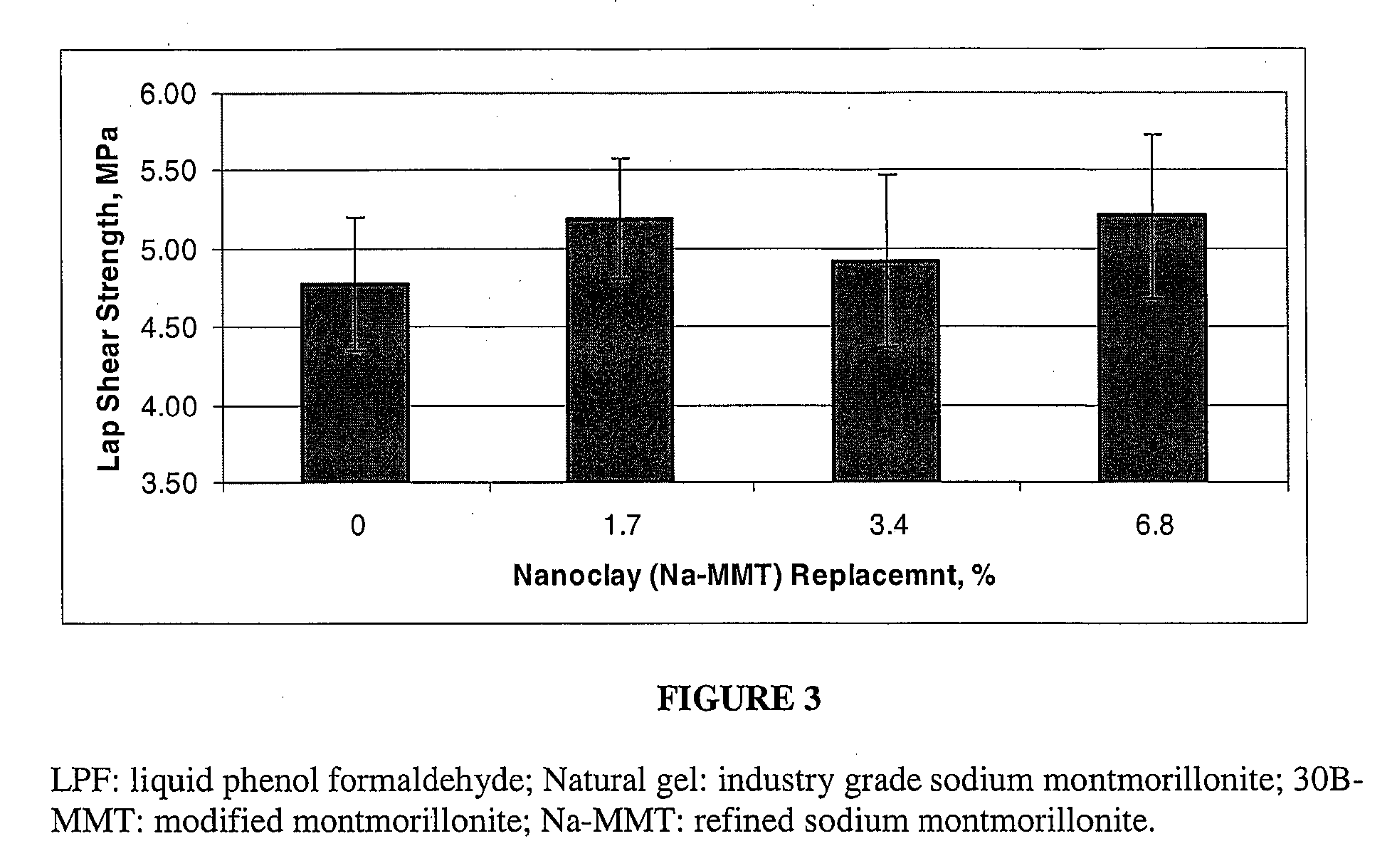Phyllosilicate modified resins for lignocellulosic fiber based composite panels
- Summary
- Abstract
- Description
- Claims
- Application Information
AI Technical Summary
Benefits of technology
Problems solved by technology
Method used
Image
Examples
example 1
[0032]Table 1 lists different formulations mixing certain percentages of fibre, resin, wax, and phyllosilicate clay in a blender. The percentages are on the oven dried fibre weight basis.
TABLE 1Lignocellulosic fibres mixing with chemical additivesResin TypesFormulations and processesWithout clay83.0-91.4% fibres were mixed with 1.5-15.0% resin,and 0.5-2.0% wax before mat forming and panelpressingWith natural clay or81.0-91.5% fibres were mixed with 1.5-15.0% resin,modified clay0.5-2.0% wax, and 0.01-1.0% clay before matforming and panel pressing
example 2
[0033]Tables 2 and 3 show the characteristics of industry-grade natural montmorillonite Na (natural gel) and purified natural montmorillonite (Cloisite® Na) used in this invention.
TABLE 2Chemical components of industry-grade naturalmontmorillonite (natural gel)Components%Components%SiO261.4TiO20.2Al2O318.1K2O0.1Fe2O33.5Other0.07Na2O2.3H2O7.8MgO1.7L.O.I4.4CaO0.4
TABLE 3Chemical components of Cloisite ® NaComponents%Components%SiO255.90P2O5Al2O319.21MnOFe2O34.28Cr2O3CaO0.14OthersBa, 40 ppm; Ni, 20 ppm; Sr, 34 ppm;Na2O3.84Zr, 113 ppm; Nb, K2O0.105 ppm; Appearance: tan powder;TiO20.11pH = 9; Specific gravity = 2.8-2.9.
example 3
[0034]Table 4 indicates the effect of modified natural clay replacement in the PPF system on OSB panel performance.
[0035]The laboratory processing conditions are as below.[0036]The nominal panel dimension: 3′×3′ 7 / 16″ (914×914×11.1 mm)[0037]Panel structure: three layers, random, face / core=50:50[0038]Panel density: 38 lbs / ft3 (608 kg / m3)[0039]Strands: commercial strands, 3 / 16″ (4.8 mm) over[0040]Wax: slack wax, 1.2% based on oven dried strand weight[0041]Resin: PPF or clay-PPF, 3% for both face and core based on oven dried strand weight[0042]Moisture content: face: 6-7%, core: 4-5%[0043]Pressing: press temperature=200° C., press time=210 sec.
[0044]Clay and PPF are premixed by manual bottle shaking for 10-20 minutes before the mixture is applied into the blender together with fibers, wax, and / or other additives.
[0045]Panel test results showed that using the Cloisite® Na-PPF resin mixture achieved better panel performance among the chosen three composite PPF resins.
TABLE 4Impact of mod...
PUM
 Login to View More
Login to View More Abstract
Description
Claims
Application Information
 Login to View More
Login to View More - R&D
- Intellectual Property
- Life Sciences
- Materials
- Tech Scout
- Unparalleled Data Quality
- Higher Quality Content
- 60% Fewer Hallucinations
Browse by: Latest US Patents, China's latest patents, Technical Efficacy Thesaurus, Application Domain, Technology Topic, Popular Technical Reports.
© 2025 PatSnap. All rights reserved.Legal|Privacy policy|Modern Slavery Act Transparency Statement|Sitemap|About US| Contact US: help@patsnap.com



